
|
|
Fundoshi
Japanese underwear for men
Published: Feb 17, 2020
|
Fundoshi is the traditional Japanese undergarment for adult males, made from a length of cotton. Before World War II, the fundoshi was the main form of underwear for Japanese adult males. However it fell out of use quickly after the war with the introduction of new underwear to the Japanese market, such as briefs and boxer briefs. Nowadays, the fundoshi is mainly used not as underwear but as matsuri (festival) clothing at Hadaka Matsuri (not celebrated in Okinawa Prefecture) or, sometimes, as swimwear.
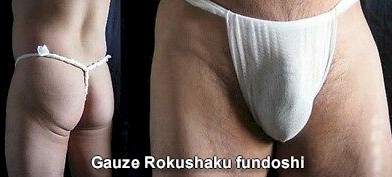
TYPES AND METHODS OF DONNING The fundoshi is first mentioned in the classic Japanese history text the Nihongi. They are also depicted on clay figures, haniwa. The fundoshi was the underwear of choice of every Japanese adult male, rich or poor, high or low status, until after the Second World War, when Americanization popularized elasticized underpants. There are several types of fundoshi, including rokushaku, kuroneko, mokko and etchu. The fundoshi comes in several basic styles. The most relaxed type consists in a strip of cloth, wound around the hips, secured at the small of the back by knotting or twisting, with the excess brought forward between the legs, and tucked through the cloth belt in front to hang as an apron. The second style, for people who are active, is formed when the cloth is wound around the hips so that there is an excess of apron, which is brought back again between the legs and twisted around the belt-cloth in back. The rokushaku fundoshi is a length of cloth, the dimensions being one shaku (34 cm / 14 inches) wide and six shaku (2.3 m / 92 to 96 inches) long; roku is Japanese for six, hence roku-shaku. It is the oldest form of fundoshi, and perhaps the most recognizable for many people. The fundoshi is often twisted to create a thong effect at the back.
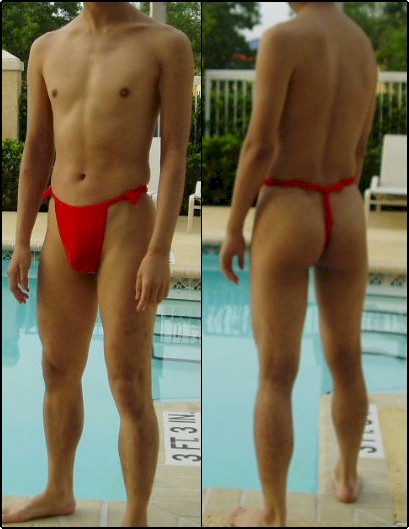
It was also the standard male bathing suit. Male children learning to swim during the early 1960s were often told to wear this kind of fundoshi because a boy in trouble could be easily lifted out of the water by the back cloth of his fundoshi. The third style, called Etchu fundoshi, which originated in the vicinity of Toyama Prefecture, is a long rectangle of cloth with tapes at one narrow end. Etchu fundoshi is a length of cloth, however it has a strip of material at the waist to form a fastening or string.

The dimensions are 14 inches width by about 40 inches length, and it is tied with the material strip in front of the body. One ties the tapes around the hips, with the cloth at the small of the back, and then pulls the cloth between the legs and through the belt, letting the remainder hang as an apron. Such fundoshi were issued to Japanese troops in World War II, and often were the sole garb of Allied POWs in tropic areas.
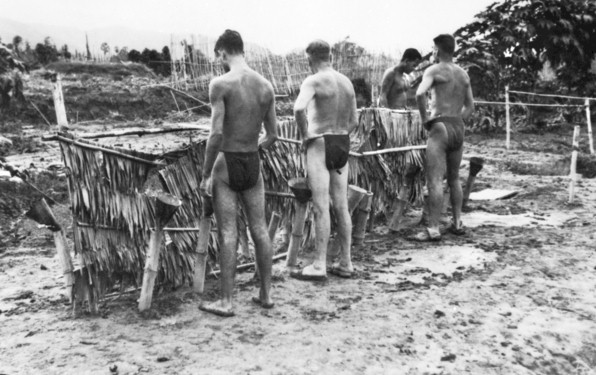
|
The best material for this is a white linen or white cotton. Silk crepe may be used according to one's taste, but plain silk is not suitable. In winter it may be lined with similar material, but in other seasons it is always single. Both ends (or front and back) are hemmed to put cords through. One of the cords forms a loop to suspend the front end from the neck, and the other secures the back end by being tied in the front. The length of the fundoshi is about 5 feet (5 shaku). A fourth type of fundoshi is the Mokko fundoshi. It is commonly regarded as the most modern form of fundoshi underwear, and it is often worn by kabuki actors both in history and sometimes now, too. Many people class it as a sort of hybrid combination of other types of fundoshi garments. Which also resembles modern western-style sewn underwear.
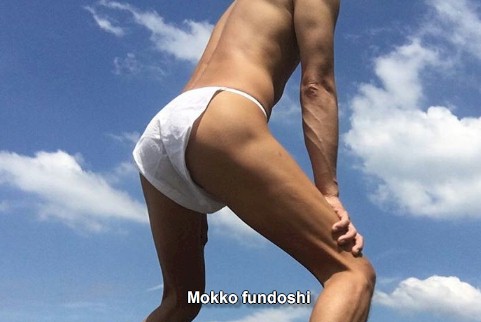
The Mokko fundoshi is very easy to wear, unlike some of the other varieties mentioned. You just put it on and tie the strings on the side, and thatís it! You could say it is similar to a string bikini bottom! There are many other varieties of fundoshi as there are many variations on the principle of a loincloth. For example, the mokko-fundoshi (literally "earth-basket loincloth" because it looks like the traditional baskets used in construction), is made like the Etchu-fundoshi but without a front apron; the cloth is secured to the belt to make a bikini effect. The kuro-neko fundoshi (literally "black cat fundoshi") is like the mokko-fundoshi except that the portion that passes from front to back is tailored to create a thong effect.
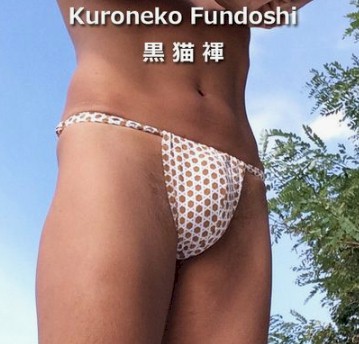
Fundoshi are not typically worn as everyday clothing. Here's another one that we're all familiar with! 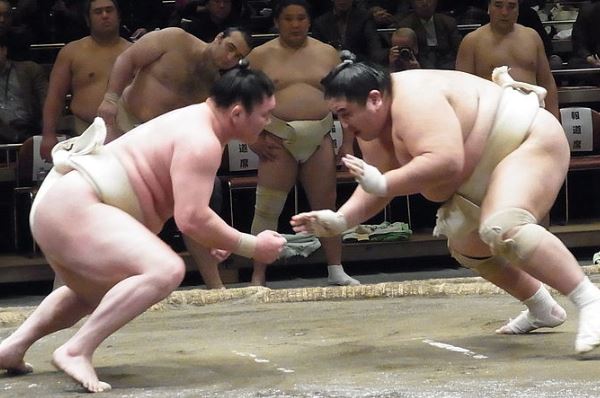
References: |
©2020 Contact: ClickOkinawa.com
